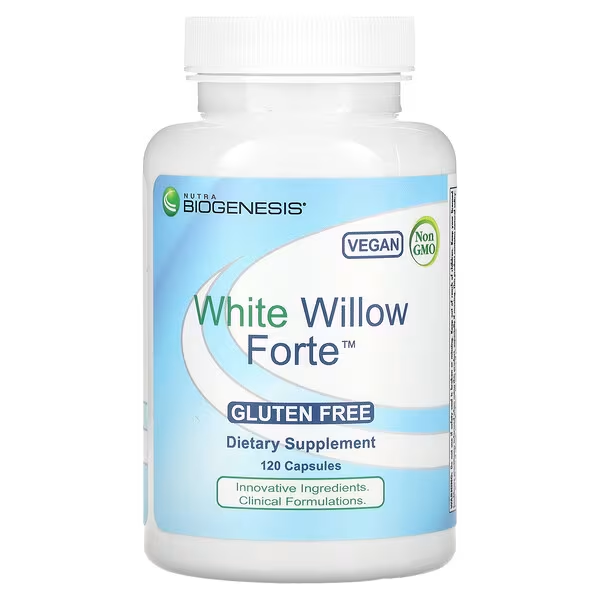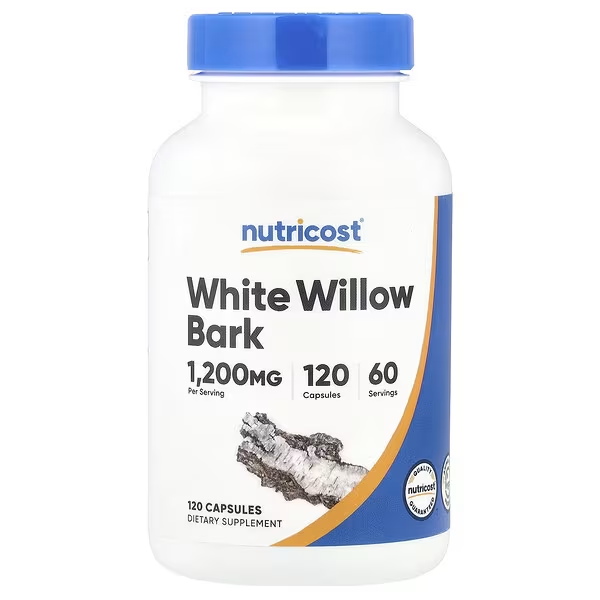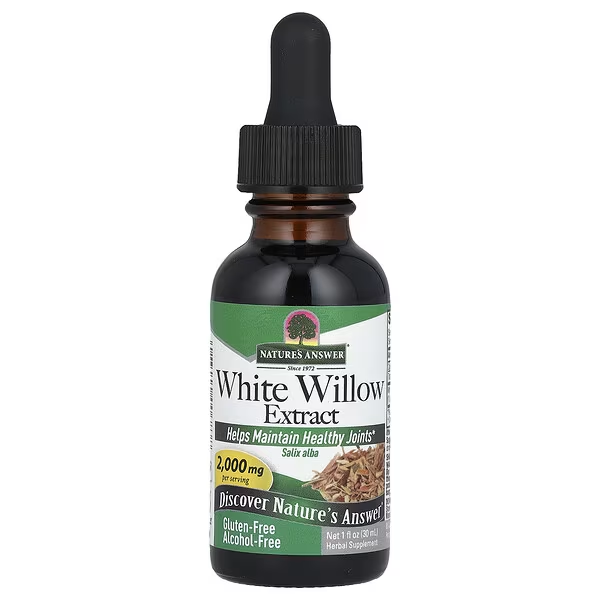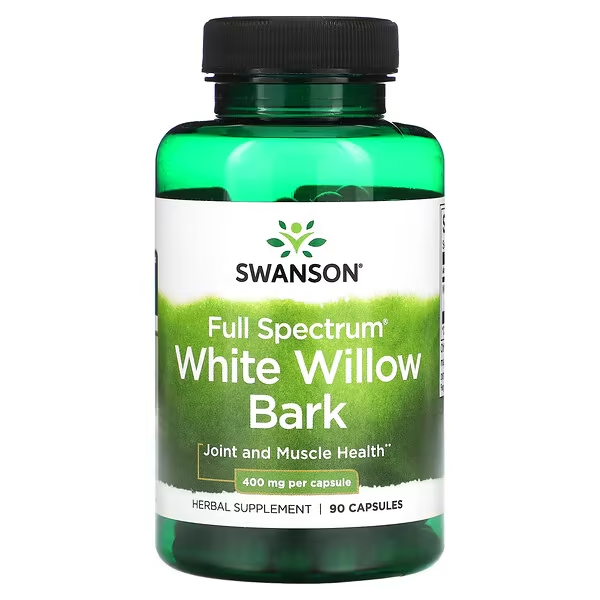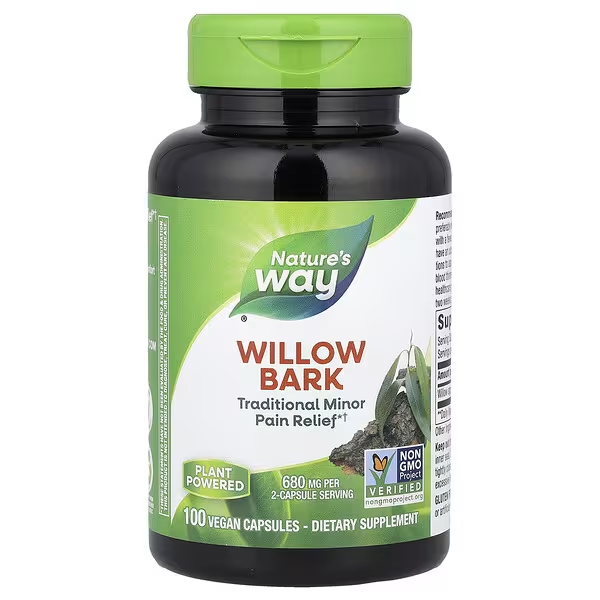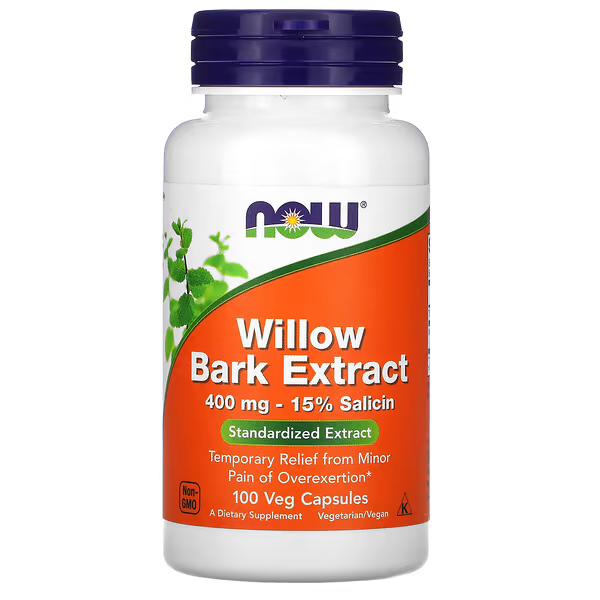White Willow Bark and Rheumatoid Arthritis
Table of Contents
Unlock the Insights!
Save Time: Jump to Willow's Wisdom!Or, explore specific areas of interest:
Willow Bark's Roles in RA
Anti-inflammatory, pain relief...
Pathways & Synergies
How it works with other elements.
Dosage & Safety
Important usage considerations.
The Willow Bark Journey
From intake to cellular action.
Understanding Values
Therapeutic use, factors.
Benefits & Risks
Weighing pros and cons.
Introduction: White Willow Bark & RA
White willow bark, a traditional remedy with a long history of use, has garnered attention for its potential role in managing rheumatoid arthritis (RA) and related symptoms. Its primary active compound, salicin, is chemically similar to acetylsalicylic acid, the active ingredient in aspirin. This connection underpins many of its therapeutic effects, particularly its anti-inflammatory and analgesic properties.
Unveiling the natural connections...
Potential Roles of White Willow Bark in RA
Inflammation & Pain Relief
The primary mechanism is through its anti-inflammatory properties. Salicin, converted to salicylic acid, reduces prostaglandin production by inhibiting pro-inflammatory cytokines like TNF-α and COX-2, and acting on the NF-κB pathway.
This action helps alleviate joint pain characteristic of RA, though research on its efficacy compared to NSAIDs is mixed.
Emerging Research:
Studies continue to explore the precise impact of white willow bark on inflammatory markers and pain pathways in RA.
Tissue Health & Collagen Support
While direct evidence for significant joint tissue regeneration in RA is limited, white willow bark may indirectly contribute. Some research (mainly skincare) suggests it might stimulate collagen synthesis. Tannins also have astringent properties.
Its antioxidant effects from polyphenols and flavonoids combat oxidative stress, potentially supporting a healthier tissue environment.
Immune System Modulation
White willow bark's interaction with the immune system is primarily linked to its anti-inflammatory actions. By inhibiting pro-inflammatory mediators, it helps temper an overactive immune response that contributes to RA's autoimmune nature.
Antioxidant, fever-reducing, and antiseptic properties from its compounds can generally support immune health.
General Health Contributions
- Antioxidant Power: Polyphenols and flavonoids help neutralize harmful free radicals.
- Fever Reduction: Traditional use for its antipyretic effects.
- Mild Antiseptic Qualities: May offer some protective benefits.
Understanding White Willow Bark: Use & Factors
Is White Willow Bark Deficient in RA?
Currently, there's no scientific evidence suggesting that white willow bark or salicin are specifically deficient in individuals with RA. RA is an autoimmune disease driven by complex immune dysregulation, not a deficiency of an herbal compound.
The use of salicylates (like aspirin or those from white willow bark) is for treating symptoms, not correcting a deficiency that causes RA.
Factors That Might Affect Salicylate Efficacy
While not a deficiency, certain factors can influence how the body processes salicylates derived from white willow bark:
- Liver and Kidney Function: Impaired function can affect metabolism and excretion of salicylates.
- Drug Interactions: Medications (e.g., anticoagulants, methotrexate) can interact, altering levels or effects.
- Nutrient Interactions: Aspirin (a salicylate) can affect levels of folic acid, vitamin C, and potassium; relevance to willow bark at typical doses needs more clarity.
- Salicylate Sensitivity: Some individuals have difficulty processing salicylates, leading to adverse reactions.
Therapeutic Values & Tolerable Upper Levels (UL)
Therapeutic Dosage (typically based on salicin content):
- Standardized Extracts: 120 mg to 240 mg of salicin per day for musculoskeletal pain. Some studies suggest 240mg for back pain. May take a week for effects.
- Dried Bark: 1-3 grams, three to four times daily.
- Tea: 1 cup (1-3g bark/150ml water), three to four times daily.
- Liquid Extract (1:1 in 25% alcohol): 1-3 ml daily.
Tolerable Upper Intake Level (UL): A specific UL for white willow bark isn't formally established. Clinical trials up to 240mg salicin daily (6-8 weeks) are generally well-tolerated. Overdosing can lead to aspirin-like toxicity (ulcers, bleeding). Adhere to recommendations and consult a professional.
Dosage Visualization (Conceptual)
Illustrating typical therapeutic use versus potential overdose risk.
Lower Therapeutic (e.g., 120mg Salicin)
Higher Therapeutic (e.g., 240mg Salicin)
Caution Zone (Exceeding Recs)
Visualizing White Willow Bark's Key Pathway
White willow bark's primary action involves the conversion of its salicin content into salicylic acid, which then inhibits inflammatory processes.
Salicin Conversion & Action
Salicin (from Willow Bark) → Salicylic Acid (in body)Salicin is metabolized, primarily in the liver and intestines, into salicylic acid, the active anti-inflammatory compound.
Anti-Inflammatory Cascade
Salicylic Acid acts hereSalicylic acid inhibits cyclooxygenase (COX) enzymes, which are crucial for producing prostaglandins. Prostaglandins are key mediators of inflammation, pain, and fever.
By reducing prostaglandin synthesis, white willow bark helps to alleviate inflammatory symptoms associated with conditions like RA.
Key Components Summary: White willow bark provides salicin, which is converted to salicylic acid. This compound then inhibits COX enzymes, leading to reduced production of inflammatory prostaglandins, thereby potentially easing pain and inflammation in RA.
Key Pathways & Synergies of White Willow Bark
Pathways of Action
White willow bark, primarily through salicylic acid, influences several biological pathways:
- Cyclooxygenase (COX) Inhibition: Reduces prostaglandin synthesis, a key mechanism for anti-inflammatory and analgesic effects.
- NF-κB Pathway: May inhibit activation of NF-κB, a critical regulator of inflammatory responses and cytokine production.
- Cytokine Modulation: Shown in some studies to reduce pro-inflammatory cytokines like TNF-α and IL-6.
- Antioxidant Pathways: Polyphenols and flavonoids contribute by neutralizing harmful free radicals.
Potential Complementary Herbs & Nutrients
For Enhanced Anti-inflammatory Support:
For Overall Joint Health & Inflammation:
Always consult a healthcare professional before combining herbal supplements or with medications.
The White Willow Bark Journey: From Intake to Action
Phase 1: Intake
White willow bark is consumed, typically as dried bark, tea, powder, or standardized extract containing salicin.
Phase 2: Absorption & Conversion
Salicin is absorbed in the gastrointestinal tract and then metabolized, primarily in the liver and intestines, into its active form, salicylic acid.
Phase 3: Distribution & Action
Salicylic acid circulates in the bloodstream and reaches sites of inflammation. It exerts its anti-inflammatory effects by inhibiting COX enzymes.
Phase 4: Cellular Effects
The inhibition of COX enzymes leads to reduced production of prostaglandins, resulting in decreased inflammation, pain, and potentially fever.
Phase 5: Metabolism & Excretion
Salicylic acid is further metabolized by the liver and its byproducts are primarily excreted by the kidneys.
Practical Considerations & Safety for White Willow Bark
Complementary Herbs
White willow bark may be used alongside other herbs for synergistic effects, but caution is advised:
- Turmeric & Ginger: For additional anti-inflammatory support.
- Boswellia & Devil's Claw: For joint pain and stiffness.
Note: Always consult a healthcare professional before combining herbal remedies, especially with existing conditions or medications.
Potential Drug Interactions
Due to its salicylate content, white willow bark can interact with:
- Anticoagulants/Antiplatelets (e.g., Warfarin, Aspirin, NSAIDs): Increased risk of bleeding. Avoid combining with aspirin/NSAIDs without medical advice.
- Methotrexate: May increase methotrexate toxicity.
- Gout Medications (e.g., Probenecid): May reduce their effectiveness.
- Antidiabetic Drugs: May enhance blood sugar lowering effects.
This is not an exhaustive list. Professional consultation is crucial if taking any medication.
Taste & Usage Tips (e.g., Smoothies)
Taste Profile: White willow bark is known for its woody, bitter, and astringent taste.
In Smoothies: Yes, powdered white willow bark can be added to smoothies. The strong flavors of fruits, vegetables, and other ingredients can help mask its bitterness. Start with small amounts.
Some practitioners include it in "super smoothies" with other beneficial herbs.
Key Safety Information & Dosage
Dosage for RA Context: Typically 120-240 mg of salicin per day from standardized extracts. Consult a professional for appropriate form and dosage for your specific situation.
Caution: Do not use in children or teenagers due to risk of Reye's syndrome. Avoid if allergic to aspirin or salicylates. Discontinue use if adverse effects occur.
Self-treating RA can delay effective conventional care. Medical consultation is vital before use.
White Willow Bark: Balancing Benefits and Risks
Potential Benefits
- Anti-inflammatory effects, may reduce joint inflammation.
- Analgesic properties, potentially alleviating pain.
- Antioxidant compounds may combat oxidative stress.
- Traditional use for fever reduction.
Potential Risks & Considerations
- Gastrointestinal upset (most common side effect).
- Increased risk of bleeding, especially if combined with blood thinners or NSAIDs.
- Allergic reactions in individuals sensitive to salicylates.
- Risk of Reye's syndrome in children/teenagers with viral infections.
- Drug interactions with various medications.
- Efficacy for RA specifically has mixed research results.
Informed use under professional guidance is key to maximizing potential benefits while minimizing risks. It should not replace conventional RA treatments without medical advice.
Reference Intakes & Forms of White Willow Bark
Common Dosages & Forms
| Form | Typical Dosage | Notes |
|---|---|---|
| Standardized Extracts | 120-240 mg salicin/day | Commonly used in studies. |
| Dried Bark | 1-3g, 3-4x/day | Traditional preparation. |
| Tea | 1 cup (1-3g bark), 3-4x/day | Steep bark in hot water. |
| Liquid Extract (1:1) | 1-3 ml daily | Consult product label. |
Note: Dosages can vary. Always consult a healthcare professional for personalized advice, especially for RA.
Primary Forms & Considerations
White willow bark is available in several forms:
- Cut/Powdered Bark: For teas or traditional preparations.
- Capsules/Tablets: Often standardized to salicin content for consistent dosing.
- Liquid Extracts/Tinctures: Concentrated forms.
Important: The quality and concentration of active compounds can vary between products. Choose reputable brands and consult with a knowledgeable practitioner.
Key Facts About White Willow Bark - Quick Summary
Natural Salicylate: Contains salicin, which the body converts to salicylic acid (aspirin-like compound).
Anti-inflammatory: Primarily acts by inhibiting COX enzymes and reducing prostaglandins.
Pain Relief: Traditionally used for pain, including joint pain and headaches.
Drug Interactions: Risk with blood thinners, NSAIDs, methotrexate, and others.
Not for Children: Risk of Reye's syndrome, especially during viral illness.
Consult Professional: Essential before use, especially with pre-existing conditions or medications.
The Secret Sauce: Willow's Wisdom!
Your time-saving rundown of White Willow Bark's must-knows for RA:
Anti-Inflammatory Action
- Salicin converts to salicylic acid.
- Inhibits COX enzymes, reducing prostaglandins.
- May modulate NF-κB and cytokines.
Pain Relief Potential
- Analgesic effects linked to anti-inflammatory action.
- Traditionally used for various pain types.
- Efficacy for RA pain specifically has mixed evidence.
Dosage & Forms
- Typically 120-240mg salicin daily.
- Available as bark, tea, extracts, capsules.
- Quality varies; choose reputable sources.
Critical Safety Points
- Risk of bleeding, GI upset.
- Numerous drug interactions (esp. blood thinners, NSAIDs).
- Not for children (Reye's syndrome risk).
- Avoid if allergic to aspirin/salicylates.
RA Context
- May offer symptomatic relief for some.
- Not a cure or replacement for conventional RA treatment.
- Evidence for RA is not as strong as for other pain types.
Professional Guidance
- Essential before starting white willow bark.
- Discuss potential benefits, risks, and interactions.
- Integrate with overall RA management plan.
Concluding Thoughts on White Willow Bark for RA
White willow bark, with its active compound salicin, offers a historical and natural approach to managing inflammation and pain, symptoms often debilitating in rheumatoid arthritis. Its mechanisms, primarily involving COX inhibition similar to aspirin, provide a basis for its potential therapeutic effects.
However, while it may offer some symptomatic relief for individuals with RA, the scientific evidence for its efficacy specifically in this condition is mixed and generally less robust than for conventional treatments. Crucially, white willow bark carries risks of side effects and significant drug interactions. It should not be considered a standalone cure or a replacement for prescribed RA medications without explicit medical guidance.
Nature's wisdom, guided by science and professional care.
Get Help Now!
